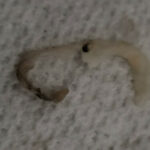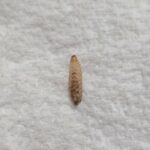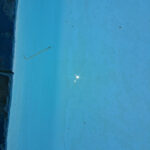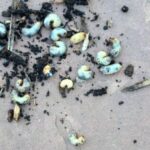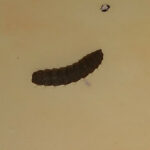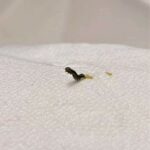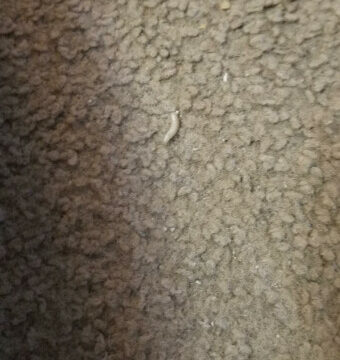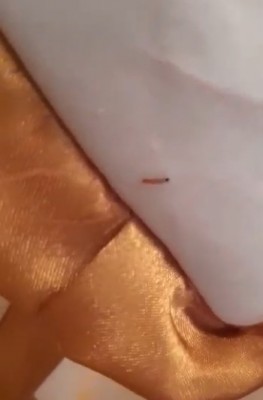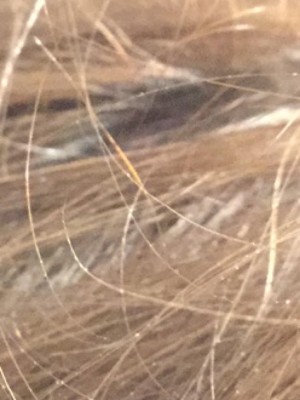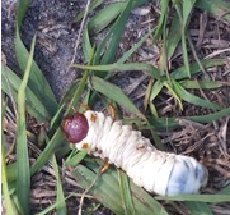
We received a question from a reader about some issues she is having with her Concord grape vine. Her situation is somewhat complex, so we’ll quote her entire message so as to not leave out any important details: “I have a Concord grape vine that I recently found some strange bulbous growths that look like some sort of cocoons on them. When I opened some up you could see very very tiny orange looking worms, no bigger than the tip of a pencil. These bulbous things are a very light pink color and have taken over the vine. The vine is supported by a trellis, birds also love to nest in it. I can’t seem to find anyone who can tell me what they are and how to treat them.”
The reader’s question, or rather implied question (since nothing was explicitly asked), concerns identification and elimination. What kind of creature is attacking her grape vine, and how can she get rid of these creatures?
The reader supplied us with a thorough description of her problem, but it still would have been helpful to see a picture of the plant and the “very tiny orange looking worms.” If nothing else, the reader has a colorful problem on her hands, and we are curious to see exactly what this looks like because we haven’t confronted a question like this before. For this reason, we must confess some uncertainty about our reader’s precise situation. We aren’t certain what she found, and thus we don’t know how she can address the problem, but we can offer a few ideas.
One thing we do know is that grape vines are susceptible to a number of different infestations. The fact that she is having problems with her grape plant therefore isn’t unusual, although this no doubt provides little consolation. The reader reports that she found worms, but we are all but certain that she found some sort of larvae. More precisely, she probably found the larval form of a moth, beetle, or fly. Common grape pests include grape berry moths (Paralobesia viteana), Japanese beetles (Popillia japonica), and rose chafers (Cetonia aurata), which are also a type of beetle. The larval form of Japanese beetles and rose chafers look like standard grub worms, which is to say they are plump, whitish little creatures, and thus they don’t sound like the tiny orange “worms” that are “no bigger than the tip of a pencil.” The larval form of grape berry moths begin their life as a whitish color, but as they mature they turn green and then eventually transition to a deep purple color. Again, these don’t sound like whatever it is our reader found. Thus, our reader doesn’t seem to be dealing with what are perhaps the most common grape plant pests.
The most promising suggestion we can offer is that our reader found grape tumid gallmakers, which, as their name implies, make galls, or abnormal plant growths that result from the presence of insects. Grape tumid gallmakers (Janetiella brevicauda) are a type of fly, and the larval form of these creatures are orange in color. The larvae feed on the grape vine’s tissue, which give rise to galls. The galls might be characterized as “strange bulbous growths” that are a reddish color. The reader can find more information about them on a page dedicated to grape tumid gallmakers, published by Cornell University’s Integrated Pest Management Program. This page also provides some advice on how to manage the problem.
We aren’t certain what our reader found, but we think there is reasonably good chance she found grape tumid gallmakers. If this isn’t right, she should seek the input of whatever university extension program is near where she lives. These are often excellent sources for information, and indeed in the writing of this article we relied on a document produced by the University of Vermont and a list of grape pests published by Cornell University. (The latter is where we found the information about grape tumid gallmakers.) The use of these types of resources will generally yield some helpful information.
All About Worms is always free, always reader-supported. Your tips via CashApp, Venmo, or Paypal are appreciated! Receipts will come from ISIPP Publishing.
You might also find these guys interesting!





